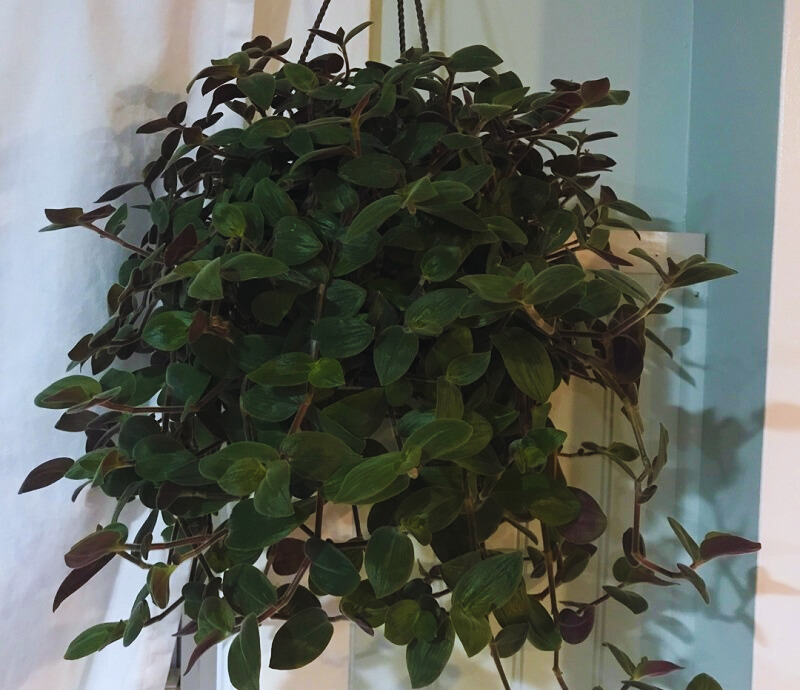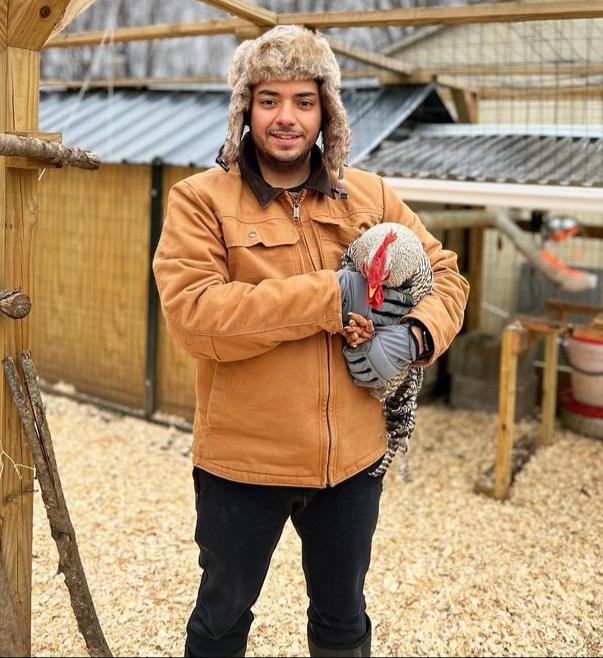Baby Bunny Bellies attract quite a bit of attention, dude to their fluffy appearance. With their charming bunny ear-shaped leaves and soft, fuzzy textures, these adorable succulents have gained immense popularity among plant lovers.
So, if you are looking to add a touch of whimsy to your indoor garden, you have come to the right place! Are you ready to dive into the enchanting world of baby bunny bellies plants?
We will take you through everything you need to know to care for these adorable plants and create a flourishing oasis in your own home.

What is a Baby Bunny Belly Plant?
The baby bunny plant, also known as Monilaria obconica, is a succulent native to South Africa that looks just like a tiny bunny nestled in the soil.
With its plump, round leaves and soft, furry appearance, it’s hard not to fall in love with these miniature botanical bunnies!
This unique plant is even a master of disguise, as its leaves evolve to mimic rabbit ears as it grows. In fact, you will find yourself doing a double-take when you see those little green ears popping up!
The baby bunny is also relatively low-maintenance, making it perfect for experienced plant enthusiasts and those new to the plant-parenting world.
So, if you are looking to add a touch of cuteness to your indoor garden, the baby bunny belly plant is an absolute must-have.
How Do You Take Care of a Baby Bunny Belly Plant? [8 Tips To Follow]
Caring for a baby bunny belly plant requires a delicate touch and extra attention. Here are the top eight tips to help you ensure your adorable little plant thrives:
1. Light Requirements
When caring for a baby bunny belly plant, understanding its light requirements is extremely crucial. These little green wonders love bright, indirect sunlight.
So, find a cozy spot near a window where the sunlight filters through gently. After all, you don’t want to expose them to direct sunlight, as it can scorch their leaves and cause harm. Because as much they love the light, they don’t appreciate being roasted.
And in case you notice your bunny belly plant leaning towards the light, simply rotate it occasionally to promote even growth. Remember, a happy bunny belly plant is the one that gets the right amount of light, just like a little sun-kissed bunny!
2. Water
Watering your little green friend can be a bit of a balancing act. After all, you certainly don’t want to drown them or let them dry out.
Well, the trick is basically to keep the soil evenly moist but not waterlogged. Hence, check the top inch of soil with your finger, and if it feels dry, understand it’s time for a drink. Use room-temperature water to avoid shocking the plant.
Pour water around the base of the plant, making sure not to splash it all over the leaves. A good rule of thumb is to water your bunny belly plant with 0.8 cups of water every nine days, but you must adjust the frequency based on the season and environmental conditions.
You see, bunny belly plants aren’t too fond of wet foliage, and who can blame them? Nobody likes a soggy belly! Also, avoid letting water collect in the saucer beneath the pot. You must let their roots breathe.
Last but not least, keep an eye on these adorable plants to gauge their water needs and thus adjust things accordingly.
3. Temperature
Bunny belly plants, like all of us, have their temperature preferences. They thrive in temperatures between 60°F and 75°F (15°C and 24°C), which happens to be the cozy range for most households too.
They don’t like being in drafty areas or exposed to extreme temperature fluctuations. So, you should keep them away from chilly windows or air conditioning vents. And in case the temperature drops, they might not be too pleased and could show it by wilting or yellowing leaves.
On the flip side, too much heat can also be a problem. Just imagine wearing a cozy sweater in the middle of summer – it’s not the most comfortable situation, right? Well, bunny belly plants feel the same way.
If it gets too hot, they might suffer and start looking unhappy. So, aim for a comfortable, room-temperature environment, and your bunny belly plant will thank you with its vibrant leaves.
You can use a heating pad or lamp to maintain the ideal temperature. However, it’s crucial to ensure that your baby bunny belly plant has the freedom to move away from the heat source if it gets too warm.
A thermometer can be your best friend in this situation, helping you monitor the temperature accurately.
4. Humidity
Next up on our list is humidity – a key factor in the overall health of your baby bunny belly plant.
They prefer a moderately humid environment, replicating the conditions of their natural habitat. So, opt for a humidity level ranging between 40% and 60% to keep your plant baby happy and healthy. You can achieve the perfect humidity levels by misting the leaves with water once or twice a day.
You can also place a tray with water near the plant or use a humidifier in the room can help maintain the desired humidity. However, avoid overdoing it, as excessive moisture can lead to fungal or bacterial growth.
5. Fertilizer
As much as we need our nutrients, these little cuties also need a boost from time to time. But don’t worry; it’s not as complicated as it sounds.
When it comes to fertilizing your baby bunny belly plant, less is more. Start by giving them a gentle feeding every two to four weeks during the growing season, which is usually spring and summer.
Plus, you can also use a balanced, water-soluble fertilizer that’s formulated for houseplants. Dilute it according to the package instructions because bunny belly plants like moderation in all things.
And if you notice the leaves turning brown or crispy, it might be a sign you are going overboard with the fertilizer. Hence, restrain yourself from overfeeding them, as this can lead to burnt roots and unhappy buns.
Always remember a little sprinkle of plant food now and then will keep your bunny belly plant well-nourished and thriving. A happy bunny belly plant is one that’s well-fed but not overwhelmed!
6. Soil
Bunny belly plants enjoy a well-draining and nutrient-rich soil mix. You can think of it as a comfy mattress for them to sink their roots into.
Mixing potting soil, perlite or sand, and peat moss works wonders. It allows excess water to flow through, preventing soggy roots, which nobody wants.
Let’s not forget about the nutrients! You can give your bunny belly plants a boost by mixing in some organic matter like compost or well-rotted manure. This will give them a feast for their roots and help them grow strong and healthy.
When it comes to repotting, do it when your bunny belly plant starts to outgrow its current home. Just like a growing kid needs a bigger pair of shoes, your plant needs a bigger pot.
So, choose one that’s only slightly larger to avoid overwhelming the roots. With the right soil mix and a well-sized pot, your bunny belly plant will feel just right at home and eventually will flourish with complete joy!
7. Pruning
Pruning is like a little spa day for your baby bunny belly plant. It helps keep them in tip-top shape and encourages healthy growth, preventing unruly branches from taking over.
So, if you notice any leggy or straggly stems, it’s time to take action!
Grab your pruning shears, make sure they are all clean and sharp, and snip away those overgrown parts. Aim to cut just above a leaf node or bud to promote new growth.
And for the best part? You can even get a little creative with your pruning as you can shape your bunny belly plant into a cute little round bush or let it grow more freely.
Well, it’s up to you! Just remember to prune sparingly and avoid going overboard. A little trim here and there will keep your bunny belly plant looking fabulous and feeling rejuvenated!
8. Propagation
Propagation is like being a plant parent and welcoming new baby bunny belly plants into the world. It’s both a fun and rewarding way to expand your bunny belly plant family.
One way is through stem cuttings. Simply snip off a healthy stem with a few leaves, remove the lower leaves, and place it in water or moist soil. Soon enough, roots will start to sprout, and you will have a brand-new baby bunny belly plant to care for.
Another method is division. If your bunny belly plant has grown into a clump, gently separate the root ball into smaller sections and plant them individually. It’s like giving your plant siblings!
Just make sure each division has some roots and foliage to start growing independently. With a little patience and love, you will be rewarded with more adorable bunny belly plants to brighten up your space. So, let the propagation journey begin, and watch your plant family grow!
FAQs
What Temperature Do Baby Bunny Belly Plants Like?
Baby bunny belly plants prefer a cozy range of 60°F to 75°F (15°C to 24°C), which happens to be the same comfort zone for most homes. It’s like the perfect room temperature for them. Besides, they don’t like extreme temperature fluctuations or drafty areas. So, keep them away from chilly windows and make sure they are not exposed to blasts of air conditioning.
Do Baby Bunnies like Water?
Baby bunny belly plants enjoy a moist, but not waterlogged, soil environment. Neither too much nor too little. Hence, water them when the top inch of soil feels dry to the touch, and make sure to pour the water right around the base of the plant.
Why is My Baby Bunny Belly Plant Wilting?
If your Baby Bunny Belly plant it wilting, it might be getting too much or too little light, or the temperature might be out of their comfort zone. Therefore, make sure to check the soil moisture levels, as both overwatering and underwatering can be detrimental. Also, ensure you are using the right soil mix and avoiding any harsh chemicals.
Closing Notes
To sum up, baby bunny bellies plants are the perfect addition to any plant lover’s collection. With their unique appearance and easy care requirements, they bring a certain touch of elegance and charm to any space.
By following these top eight tips, you will be able to keep these adorable plants thriving and watch them grow into beautiful, fuzzy bunnies right before your eyes.
So, what are you waiting for? Go ahead and bring home a baby bunny belly plant today – your indoor garden will thank you!


